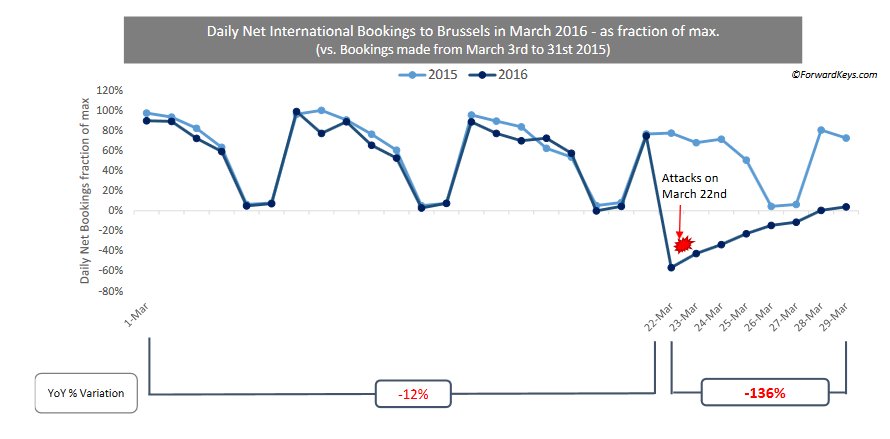A revised flight schedule has been introduced at Brussels Airport in order to meet the growing numbers of passengers using the European hub. However, the facility remains at a much reduced capacity as work continues to return the airport to full capacity.
Around a month after operations recommenced at Brussels Airport after the terrorist attacks of March 22, 2016, the number of passengers per flight has been rising faster than expected, so a new flight schedule has been drawn up for all passengers to leave in complete safety and comfort.
In the temporary structures currently available Brussels Airport can accommodate up to 18,000 departing passengers per day, provided that the passengers arrive evenly spread over the day. The revised schedule from the slot coordinator, Belgium Slot Coordination, permits 22 flights per hour.
This is fewer than permitted when the airport first reopened at the beginning of April, but is a necessity due to the stronger passenger demand. “With the new spread of the number of flights, the aim has been to maintain as many flights as possible and at the same time maintain the maximum capacity of 18,000 departing passengers per day,” said an airport executive.
To secure this optimum offering some flights are being scheduled sooner or later than before, to ensure the smooth throughput of departing passengers in the temporary structures. However, the airport is confident that it will be able to complete a partial reopening of the terminal this month, after consultation with security services.
The airport is currently starting the final phase of the technical preparations for a partial reopening of the departures hall. “The technical repair work is progressing smoothly and will be completed shortly,” it said in a statement. Once this work is completed it still requires certification and approval from the Directorate General of Civil Aviation, the federal police and the fire service prior to opening.
“The airport will also implement the security measures in the departures hall that have been ordered by the federal government,” the airport added in a statement.
Brussels Airport re-opened for traffic on April 3, 2016, 12 days after two explosions rocked the terminal building leaving 15 people dead and more than 100 more injured. In the days that followed air connectivity with Brussels was retained through flights to smaller regional points in Belgium and neighbouring Netherlands and airlines using larger capacity equipment into destinations such as Amsterdam.
The airport made use of the vacant ground floor area of its new connector building to install a temporary check-in area and security checkpoint while work was completed on the main terminal structure. This houses 36 check-in desks and provides direct access to central screening and the unaffected airside areas of the terminal.
After the facility was live tested by volunteers, it was opened for three initial flights on April 3, 2016 and subsequently expanded the following days to handle additional flights. The resumption of operations in the departures hall from this month will eventually lead to the full return of operations, probably from late summer, with the interim facility likely to remain in operation until after the summer peak.
A report by travel intelligence provider, Forward Keys, has highlighted how the bomb attacks in Brussels severely affected flight bookings into the Belgium capital. In the days following the attacks on March 22, 2016, net bookings – new bookings minus cancellations - fell by 136 percent when compared with last year, it said in a white paper.





